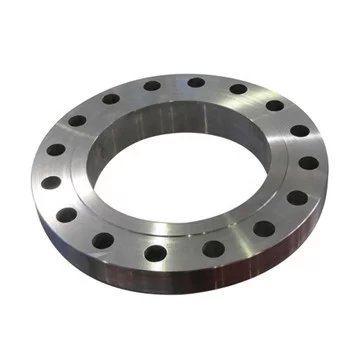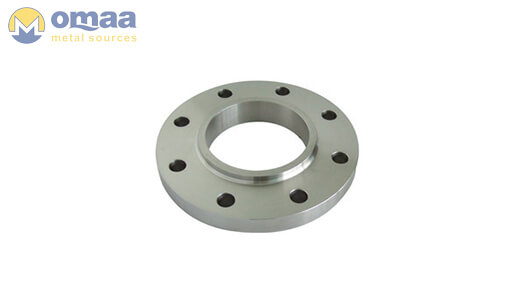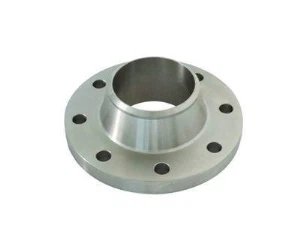Exporters of EN1902-1 Orifice Flange, Ready Stock of EN1902-1 PN25 Type 11 Blind Flanges, EN 1902-1 PN40 Type 05, Check Sizes And Dimensions Of EN1902-1 Socket Weld Flange.
EN1902-1 flanges Specification
Size: 1/2" (15 NB) to 48" (1200NB) DN10~DN5000
Schedule: SCH10, SCH 40, SCH 80, SCH 160 To SCH XXS
Dimension Standard: ANSI/ASME B16.5, B 16.47 Series A & B,
B16.48, BS4504, BS 10, EN-1092, DIN, etc.
Type: Ring Joint Flange (RTJ), Flat Face Flange (FF),
Raised Face Flange (RF), Male and Female Flange (M & F),
Lap Joint Flange, Large and Small Tongue-and-Groove Flange (T & G)
Pressure rating: 150#, 300#, 600#, 900#, 1500#, 2500#,
PN6, PN10, PN16, PN25, PN40, PN64 etc.
EN 1092-1 is a European standard that specifies the requirements for circular steel flanges used in various applications. Flanges are essential in piping systems, connecting pipes and providing a secure, leak-free joint. EN 1092-1 Flanges are designed to meet specific criteria to ensure compatibility, reliability, and performance.
One of the key features of EN 1092-1 flanges is their standardised dimensions. The standard specifies various flange types, such as welding neck, blind, slip-on, threaded, and lap joint flanges, each with its specific design and dimensions. This standardisation allows for interchangeability between different flange manufacturers and facilitates easy integration into existing piping systems.
EN 1092-1 Flanges are manufactured from either carbon steel or stainless steel, which provide outstanding strength and corrosion protection. The material used relies on the specifics of the application, such as temperature, pressure, and the type of fluid it will be transporting. Carbon steel flanges are typically employed in industrial situations, while stainless steel flanges are suitable when preventing rust is essential.
EN 1092-1 Flanges Specifications
| ASME B16.5 EN 1092-1 Flanges Size Chart | 1/2" (15 NB) to 48" (1200NB) DN10~DN5000 |
|---|---|
| EN 1092-1 Flanges Standards | ANSI/ASME B16.5, B16.47 Series A & B, B16.48, BS4504, BS 10, EN-1092, DIN, ASME Flange, ASME Flange, BS Flange, DIN Flange, EN Flanges, GOST Flange, ASME/ASME B16.5/16.36/16.47A/16.47B, MSS S44, ISO70051, JISB2220, BS1560-3.1, API7S-15, API7S-43, API605, EN1092 |
| EN 1092-1 Flanges Pressure Rating ANSI | Class 150 LBS, 300 LBS, 600 LBS, 900 LBS, 1500 LBS, 2500 LBS |
| EN 1092-1 Flanges Pressure Calculation in DIN | 6Bar 10Bar 16Bar 25Bar 40Bar / PN6 PN10 PN16 PN25 PN40, PN64 |
| JIS | 5K, 10 K, 16 K 20 K, 30 K, 40 K, 63 K |
| UNI | 6Bar 10Bar 16Bar 25Bar 40Bar |
| EN | 6Bar 10Bar 16Bar 25Bar 40Bar |
| Coating | Oil Black Paint, Anti-rust Paint, Zinc Plated, Yellow Transparent, Cold and Hot Dip Galvanized |
| Most common types of EN 1092-1 Flanges | Forged / Threaded / Screwed / Plate |
| Test Certificates | EN 10204/3.1B Raw Materials Certificate 100% Radiography Test Report Third Party Inspection Report, etc |
| Production technique |
|
| Connect Type/ Flange Face Type | Raised Face (RF), Ring Type Joint (RTJ), Flat Face (FF), Large Male-Female (LMF), Lap-Joint Face (LJF), Small Male-Female (SMF), Small Tongue, Large Tongue & Groove, , Groove |
| Special design | As per your drawing AS, ANSI, BS, DIN and JIS |
| Test | Direct-reading Spectrograph, Hydrostatic testing machine, X-ray detector, UI trasonic flaw detector, Magnetic particle detector |
| Equipment | Press machine, Bending machine, Pushing Machine, electric bevelling machine, Sand-blasting machine etc |
| Origin | Indian / West Europe / Japan / USA / Korean |
| Manufacturer of | ASME DIN, GOST, JIS, UNI, BS, AS2129, AWWA, EN, SABS, NFE etc.
|
| EN 1092-1 Flanges Uses & application |
|
| Export to | Ireland, Singapore, Indonesia, Ukraine, Saudi Arabia, Spain, Canada, USA, Brazil, Thailand, Korea, Iran, India, Egypt, Oman, Dubai, Peru, etc |
| Material Test Certificates (MTC) as per EN 10204 3.1 and EN 10204 3.2, Test Certificates certifying NACE MR0103, NACE MR0175 | |
To ensure the integrity and performance of the joint, EN 1092-1 flanges undergo rigorous testing and inspection procedures. These include dimensional checks, visual inspection, material testing, and non-destructive testing methods like ultrasonic examination or radiographic testing. By adhering to these quality control measures, the flanges meet the required standards for safety and reliability.
EN 1092-1 Flanges incorporate several sealing methods to guarantee no leakage. Depending on its use, flanges can be fitted with gaskets constructed from different materials, including rubber, PTFE, and metal. When deciding which gasket to use, consideration must be made about the temperature, pressure, and type of liquid transported.









